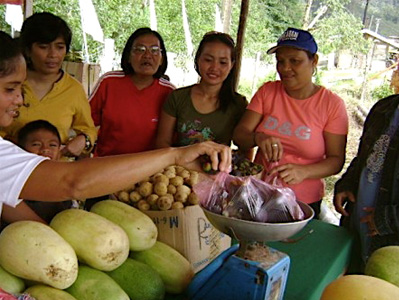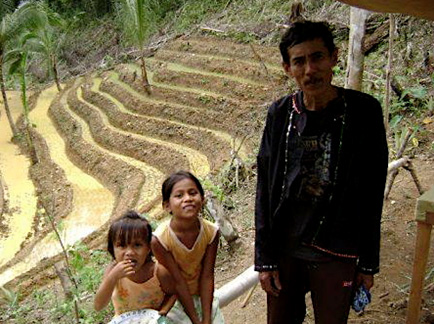Quadrant of Development: Livelihood
TVI Resource Development Philippines Inc.’s (TVIRD) sustainable livelihood framework involves an assessment of community assets, adaptive strategies and technologies, and the analysis of policies and investment requirements to enhance livelihood opportunities for beneficiaries. The company believes that livelihood can be sustainable if it can cope with and recover from stress – such as the end of the mine’s life – as well as maintain and enhance the capabilities of community members and provide sustainable opportunities for the next generation.
TVIRD’s Sustainable Livelihood approach takes into consideration the community’s strengths. This approach acknowledges that communities are both catalysts and subjects of change and that they have much strength and much knowledge about their own situation. This approach places a strong emphasis on sustainability in terms of economics, the environment and the social well-being of people in the community. It also uses empowerment rather than welfare, improves the productivity of existing livelihood systems and creates new opportunities on a sustainable basis.

TVIRD personnel inspect Subanon produce under the sustainable livelihood program during the first IP flea market – both of which are supported by the company.
A prime example of this approach is TVIRD’s Farmer-Instructor Technician (FIT) program – a livelihood-through-agroforestry component of the company’s Social Development and Management Plan (SDMP) for its indigenous Subanon hosts in Canatuan. Under FIT, the once semi-nomadic Subanons, who were used to the traditional and destructive slash-and-burn (“kaingin”) farming method, demonstrated that they can easily adapt to the irrigated multi-cropping scheme using the rice terraces farming technology – the same technology applied by generations of Ifugao IPs in the mountainous terrains of Northern Luzon.

Fernandez Anda and his daughters pose with the first successful rice terraces project in Mindanao. This farm has benefited the community by giving sustainable livelihood throughout the years.
To further work for the empowerment of its beneficiaries, TVIRD will develop indicators to measure improvements in the host communities’ livelihood systems and the sustainability of these systems.



